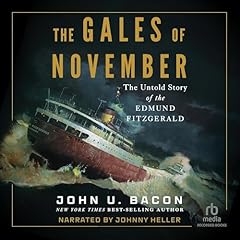
The Last Million
Europe's Displaced Persons from World War to Cold War
No se pudo agregar al carrito
Solo puedes tener X títulos en el carrito para realizar el pago.
Add to Cart failed.
Por favor prueba de nuevo más tarde
Error al Agregar a Lista de Deseos.
Por favor prueba de nuevo más tarde
Error al eliminar de la lista de deseos.
Por favor prueba de nuevo más tarde
Error al añadir a tu biblioteca
Por favor intenta de nuevo
Error al seguir el podcast
Intenta nuevamente
Error al dejar de seguir el podcast
Intenta nuevamente
$0.00 por los primeros 30 días
POR TIEMPO LIMITADO
Obtén 3 meses por $0.99 al mes + $20 de crédito Audible
La oferta termina el 1 de diciembre de 2025 11:59pm PT.
 Exclusivo para miembros Prime: ¿Nuevo en Audible? Obtén 2 audiolibros gratis con tu prueba.
Exclusivo para miembros Prime: ¿Nuevo en Audible? Obtén 2 audiolibros gratis con tu prueba.
Por tiempo limitado, únete a Audible por $0.99 al mes durante los primeros 3 meses y obtén un crédito adicional de $20 para Audible.com. La notificación del bono de crédito se recibirá por correo electrónico.
1 bestseller o nuevo lanzamiento al mes, tuyo para siempre.
Escucha todo lo que quieras de entre miles de audiolibros, podcasts y Originals incluidos.
Se renueva automáticamente por US$14.95 al mes después de 3 meses. Cancela en cualquier momento.
Elige 1 audiolibro al mes de nuestra inigualable colección.
Escucha todo lo que quieras de entre miles de audiolibros, Originals y podcasts incluidos.
Accede a ofertas y descuentos exclusivos.
Premium Plus se renueva automáticamente por $14.95 al mes después de 30 días. Cancela en cualquier momento.
Compra ahora por $24.75
-
Narrado por:
-
Malcolm Hillgartner
-
De:
-
David Nasaw
In May 1945, German forces surrendered to the Allied powers, putting an end to World War II in Europe. But the aftershocks of global military conflict did not cease with the German capitulation. Millions of lost and homeless concentration camp survivors, POWs, slave laborers, political prisoners, and Nazi collaborators in flight from the Red Army overwhelmed Germany, a nation in ruins. British and American soldiers gathered the malnourished and desperate refugees and attempted to repatriate them. But after exhaustive efforts, there remained more than a million displaced persons left behind in Germany: Jews, Poles, Estonians, Latvians, Lithuanians, Ukrainians, and other Eastern Europeans who refused to go home or had no homes to return to. The Last Million would spend the next three to five years in displaced persons camps, temporary homelands in exile divided by nationality, with their own police forces, churches and synagogues, schools, newspapers, theaters, and infirmaries.
The international community could not agree on the fate of the Last Million, and after a year of debate and inaction, the International Refugee Organization was created to resettle them in lands suffering from postwar labor shortages. But no nations were willing to accept the 200,000 to 250,000 Jewish men, women, and children who remained trapped in Germany. In 1948, the United States, among the last countries to accept refugees for resettlement, finally passed a displaced persons bill. With Cold War fears supplanting memories of World War II atrocities, the bill granted the vast majority of visas to those who were reliably anti-Communist, including thousands of former Nazi collaborators and war criminals, while severely limiting the entry of Jews, who were suspected of being Communist sympathizers or agents because they had been recent residents of Soviet-dominated Poland. Only after the controversial partition of Palestine and Israel's declaration of independence were the remaining Jewish survivors able to leave their displaced persons camps in Germany.
A masterwork from acclaimed historian David Nasaw, The Last Million tells the gripping yet until now largely hidden story of postwar displacement and statelessness. By 1952, the Last Million were scattered around the world. As they crossed from their broken past into an unknowable future, they carried with them their wounds, their fears, their hope, and their secrets. Here for the first time, Nasaw illuminates their incredible history and, with profound contemporary resonance, shows us that it is our history as well.
Los oyentes también disfrutaron:




















Las personas que vieron esto también vieron:












Well worth read to those interested in history.
Se ha producido un error. Vuelve a intentarlo dentro de unos minutos.
The book is long, but it is full of primary sources, quotes and detailed research of records and political action as well as comments from those leaders who were positioned in power around the world.
An Important History that Resonates Today
Se ha producido un error. Vuelve a intentarlo dentro de unos minutos.
The Truth Never Dies
Se ha producido un error. Vuelve a intentarlo dentro de unos minutos.
While I am not an academic, making it challenging to process all the detailed information, the book's consistent theme was clear: the distinction between who was wanted and who was not. This was a significant aspect of the displaced persons' struggle to find new homes. Nasaw's detailed account highlights the political, social, and humanitarian complexities involved in resettling these millions of individuals.
Additionally, the book draws a parallel to modern-day immigration issues, showing that the dilemmas and debates surrounding displaced persons and refugees remain relevant today. "The Last Million" not only enriched my understanding of post-World War II history but also offered insights into the ongoing global challenges of displacement and resettlement.
Reflections on 'The Last Million': A Unique Perspective on Post-WWII Displacement
Se ha producido un error. Vuelve a intentarlo dentro de unos minutos.
Must read for those who study the WW's in Europe
Se ha producido un error. Vuelve a intentarlo dentro de unos minutos.
Detailed But Riveting
Se ha producido un error. Vuelve a intentarlo dentro de unos minutos.
Incredible perspective on the postwar era
Se ha producido un error. Vuelve a intentarlo dentro de unos minutos.
Somber Aftermath
Se ha producido un error. Vuelve a intentarlo dentro de unos minutos.


